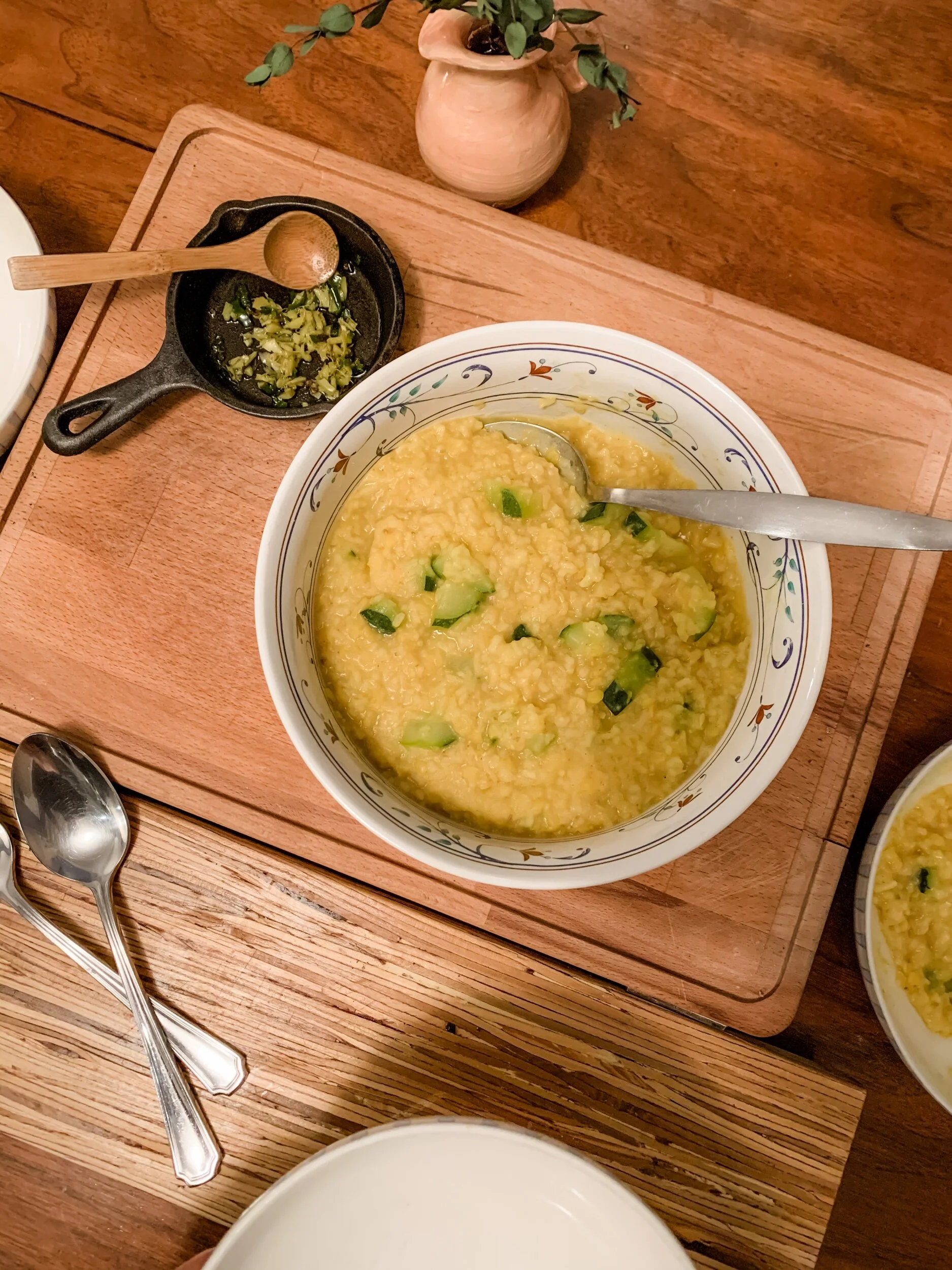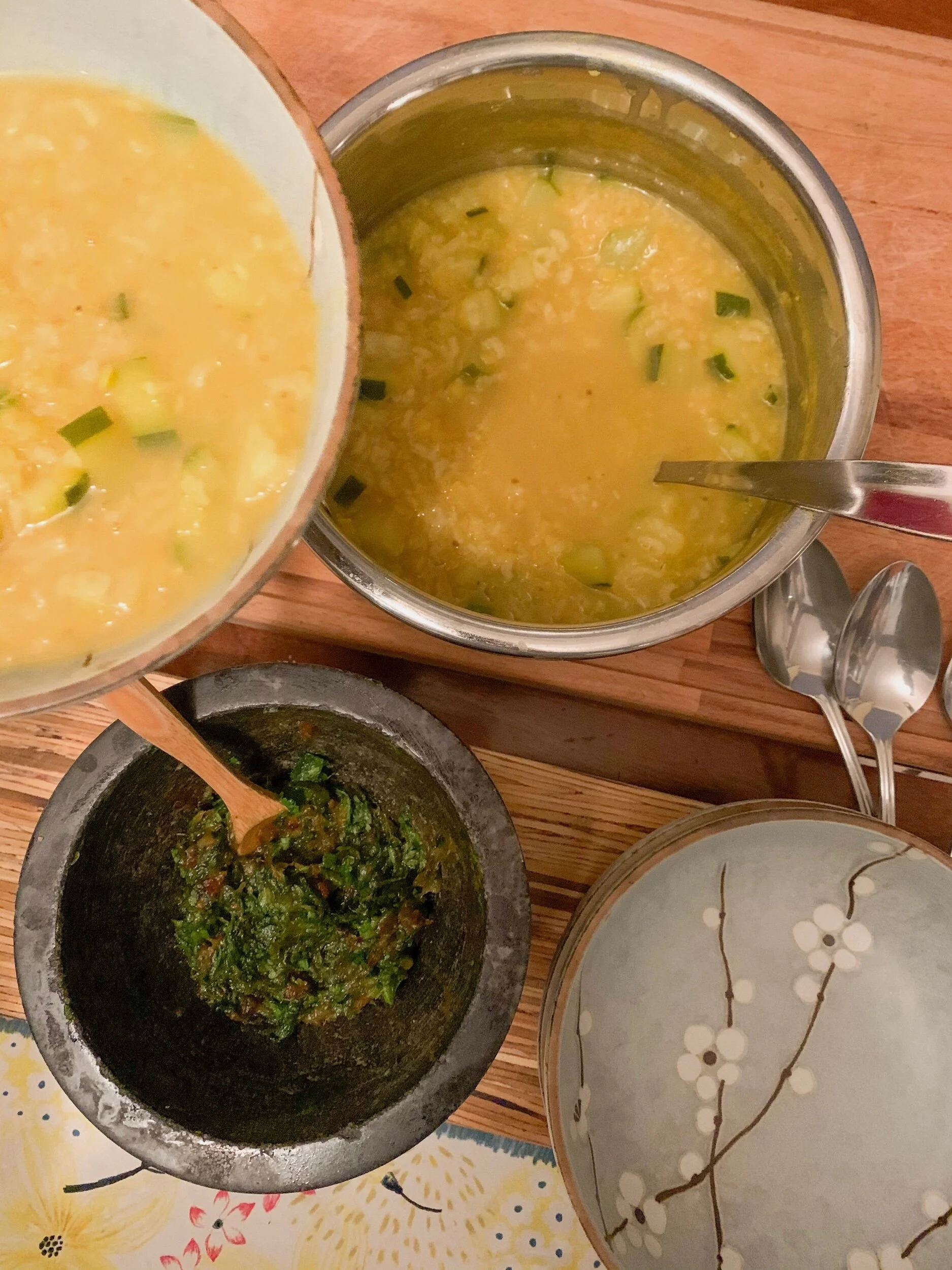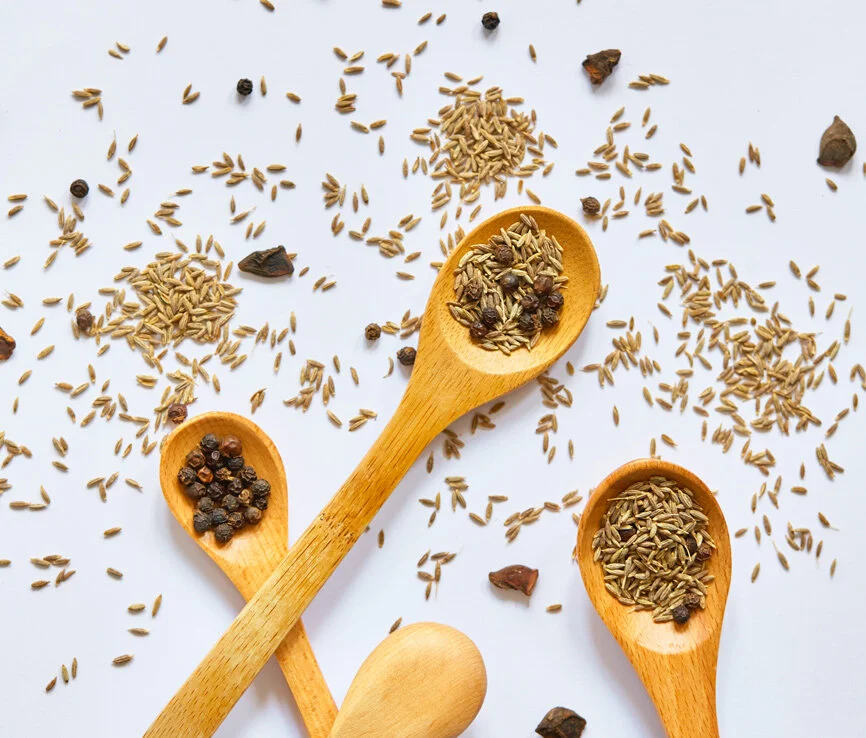Kichari
WELCOME TO MY BLOG! I’M EVANGELINE & A MOM. ALSO, AN RMT, and AYURVEDA-YOGA COUNSELLOR. I STARTED MY BLOG DURING COVID TO STAY CONNECTED TO MY CLIENTS AND SHARE MY LOVE OF COOKING HEALTHY, AYURVEDIC MEALS.
AYURVEDIC COOKING TAKES A BALANCED, HEALING APPROACH FOR YOUR DAILY COOKING NEEDS. YOU WILL FIND SIMPLE, EASY TO MAKE NOURISHING MEALS I HAVE MADE FOR MY FAMILY, WITH A DOSE OF AYURVEDA & YOGA WISDOM.
Kichari is a staple meal in our home. There are countless variations to this traditional dish from India, and after making it many different ways, I often turn to a basic version, like the recipe here.
Kichari is traditionally made of mung dahl (split mung bean) and white basmati rice. A nourishing, satisfying, easy to digest meal without clogging, nor inflammatory ingredients. When combined, mung dahl and basmati cooked in ghee makes for a complete meal containing protein, carbohydrates and fats. Kichari is for those days when the tummy needs an easy to digest meal, and plain, simple comfort.
Kichari is also a meal prescribed during an Ayurvedic cleanse and eaten for consecutive days, and spices added for gentle detoxification. Spices not only add flavour, but in Ayurveda spices are recognized as having medicinal properties, and used in different combinations in cooking to kindle digestion, gently cleanse and purify the body. The spices in this recipe, fennel, coriander, cumin and turmeric are balancing for all, and a digestive aid, and turmeric in particular cleans the liver.
Food begins to turn acidic and lose their prana after four hours of being freshly made, so it is highly recommended a fresh batch is made especially when cleansing or when following a regimen. Another consideration is which grain is used. White basmati has a lower glycemic index than other white rice varieties. Whole grain brown rice with their bran, the outer layer, requires a robust digestion, and not recommended with kichari during a cleanse.
There are many variations you can make with this dish using other lentils. When you need to be easy on your tummy you would want to choose lentils where the outer layer has been removed, making it easier to digest. When made with other lentils the outer skin is in tact. Red lentils and split mung dahl are lighter on the tummy as the skin has been removed making it easier to digest. You may want to try 50/50 white basmati and quinoa, as quinoa is easy to digest and in itself is a complete protein food containing all nine essential amino acids (building blocks of protein). Quinoa is actually a seed, not a grain, but is just as nutritious as a whole grain, and light on the tummy.
Kulthi lentils can be substituted once or twice a month during your spring or fall detox, as kulthi breaks down gall stones or kidney stones.
On non-cleansing days, you can get as creative as you like, building on this recipe adding other vegetables and incorporating other spices like ginger, thai green chilis, black peppercorns, or other common herbs and spices like fenugreek and cardamom, or curry leaves and rosebuds. When you start cooking with spices and herbs and get to know their characteristics, their metabolic actions and qualities, you can tailor your spice combinations based on what your body likes and what it is needing.
Cooking for a family with different tastes and needs, I find separating some of the spices helpful. Below you’ll see I put aside ginger and thai green chilis cooked in ghee. In the other I prepared a cilantro chutney condiment in the mortar.
Ginger- heating quality, anti-inflammatory properties; caution when using in summertime and when your pitta dosha is high
Thai Green Chili- heating quality, channel opening; contains more soma than thai red chili and not as fiery burning heat as red chili
Cilantro- the plant of a coriander seed; cooling quality; used for detoxing heavy metals; ensure you eat foods that bind the toxins the day you have cilantro, like barley, arrowroot, taro and okra
Curry Leaves- cleanses the liver
Fenugreek- helps metabolize fat and protein
Cardamom- helps metabolize protein
Turmeric- “friend to the liver”, antioxidant, anti-inflammatory
Soma salt- also known as Soma Lavan, a rock salt; written in the Ayurvedic texts as the best salt; cooling variety of the Himalayan salts, and all other salts; contains magnesium, calcium and potassium in addition to sodium
Kichari Recipe
Serves 2
Prep Time: 10 min
Cook Time: 20 minutes
Ingredients
¼ cup red lentils rinsed well
⅛ cup basmati rinsed well
⅛ cup quinoa
1 ½ cups water + ½ cup more
1 tsp ghee or olive oil
½ tsp fennel
½ tsp coriander
⅛ tsp cumin
⅛ tsp turmeric
1 Tablespoon arrowroot flour
1 thai green chili (optional)
4-5 curry leaves (optional)
1 small zucchini cut in cubes or any leafy greens- about ½ cup packed
½ tsp soma salt
Instructions
Put the ghee or olive oil and spices in a medium size pot on medium-low heat until aroma is released- about a minute. If you burn the spices start over.
Add well rinsed dahl, quinoa and basmati, arrowroot flour, and water to the pot and turn up to medium-high heat to a full boil. Stir all together and let boil for 5 minutes.
(Ensure the rinsing water is clear as cloudy water means there is still starch in the lentils and rice.)Turn heat to low and cover with a lid to cook for 15 minutes.
Add zucchini or leafy greens, and cook for another 5 minutes. Stir in a bit more water at the end of cooking if you’d like it less thick, and cook for another couple of minutes.
Salt to taste. If cleansing, you may want to omit the salt.
Enjoy!
Spice Mix Recipe
My go-to spice mix I learned from my Ayurvedic teacher Vaidya Mishra. Spices below are available in just about any grocery store and not only adds flavour to any dish, but also aids in digestion and absorption of nutrients. Try to get non-irradiated and organic, and seed form and grind them in a spice grinder as needed.
6 tsps fennel seeds
6 tsps coriander seeds
1 tsp cumin seeds
1 tsp turmeric powder
Grind fennel, coriander and cumin in a spice grinder, then add in turmeric and combine all together.
Store in a jar with a lid in a cool place. Keeps for 4-6 weeks.
This is a basic spice mix or masala that I turn to for many meals. I also add other spices to this mix, depending on what my family would like to eat or if anyone needs extra attention with their tummy. As you learn more about qualities and taste of spices you will find yourself experimenting and creating your own spice combinations. Ayurveda provides us details on the medicinal qualities of spices and herbs. If you’re new to spices just start with a pinch or two in your meals. The book The Yoga of Herbs is an excellent reference guide. Also my Ayurveda teacher Vaidya Mishra has made available to us a line of Ayurvedic herbal formulations and self-care products, including a line of spice mixes here on Chandika.
Fennel - aids in digestion, cooling quality
Coriander- ushers out toxins and heavy metals, cooling quality
Turmeric - anti-inflammatory, antioxidant, cleans the liver
Cumin - helps in absorption of nutrients
References
Vaidya R. K. Mishra- Notes from Shaka Vansiya Ayurveda Courses, Practicum, Conferences and Lectures 2003-2015



